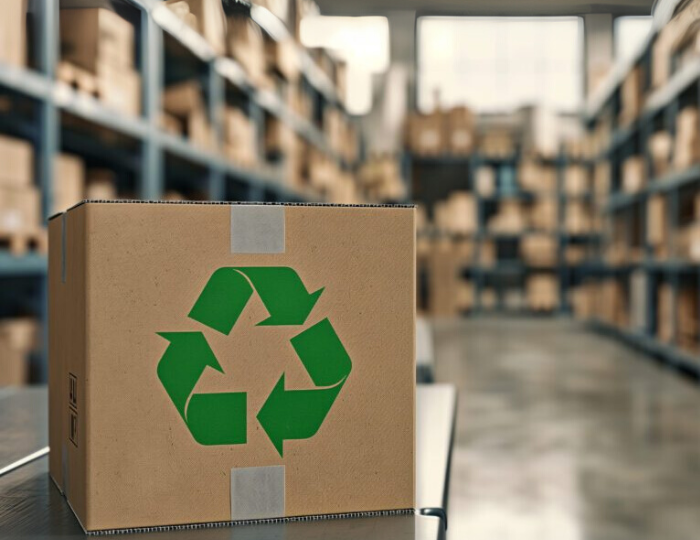
Five U.S. states: California, Colorado, Oregon, Maine, and Minnesota, have adopted Extended Producer Responsibility (EPR) packaging laws. Washington and Maryland recently followed. Key compliance deadlines range from mid‑2025 through 2026. Brands selling packaged consumer goods must register, report, pay fees, and fund recycling programs under these laws, noncompliance can result in significant fines or losing market access.
What is Packaging EPR and Why It Matters
In the face of increasing packaging waste and pressure to meet climate and sustainability goals, states are turning to Extended Producer Responsibility (EPR) frameworks to shift the burden of recycling and end-of-life packaging management from taxpayers to producers. The logic is simple: if you make or sell the packaging, you must help pay to dispose of it responsibly. EPR schemes also incentivize eco-friendly packaging design and reduce reliance on municipal budgets.
For businesses, these laws represent a significant shift in liability and operations, especially for national brands that now must navigate a patchwork of state-specific rules.
How does packaging EPR work?
EPR packaging laws generally require companies to:
- Register with a state‑approved Producer Responsibility Organization (PRO)
- Submit data on packaging quantities sold
- Pay fees based on weight/type of materials
- Fund recycling services
This incentivizes circular product design and funds local waste infrastructure.
Who’s Covered, and What Packaging Counts
EPR laws cast a wide net. Any company that introduces packaged products into covered states—including manufacturers, private labelers, brand owners, and even some importers—is subject to compliance.
“Packaging” is broadly defined across states but generally includes:
- Primary packaging: wrappers, boxes, and containers used for individual products
- Secondary packaging: grouped packaging like trays or boxes around multipacks
- Tertiary packaging: pallets, stretch film, and shipping materials (covered more narrowly in some laws)
Covered materials often include:
- Single-use plastics
- Rigid and flexible plastic containers
- Paper and cardboard
- Aluminum and metal packaging
- Glass bottles and jars
- Composite packaging (e.g., cartons)
Many of these EPR laws also introduce eco-modulated fees—charging less for easily recyclable packaging and more for harder-to-recycle formats. This creates financial incentives to redesign packaging with recyclability in mind.
EPR also introduces complex concepts such as “de minimis” exemptions, shared producer liability, labeling requirements, and audit rights. Businesses must assess their role in the distribution chain for each jurisdiction.
State-by-State Summary: What’s Required, When, and What Happens If You Don’t Comply
| State | Covered Products | Final Compliance Deadline | Penalties |
|---|---|---|---|
| California | Single-use packaging, plastic foodware, e-commerce shipping materials | Full compliance by Jan 1, 2027 | Civil penalties up to $50,000 per violation/day |
| Colorado | Packaging and printed paper | PRO registration by Jul 1, 2025 | Fines up to $20,000 per day |
| Oregon | Packaging, paper products, food service ware | Reporting by Mar 31, 2025; fees by Jul 1, 2025 | Enforcement by DEQ; penalties up to $25,000/day |
| Maine | Consumer packaging (broad definition) | Compliance begins in 2026 | Suspension from market; financial penalties TBD |
| Minnesota | All packaging used by producers who meet threshold | Effective Jul 1, 2025; implementation by 2028 | State penalties for noncompliance TBD |
| Washington | All plastic and paper packaging sold into state | Implementation starts Jul 1, 2026 | TBD; rulemaking in 2025 expected to define penalties |
| Maryland | Packaging from consumer products | Effective Oct 1, 2025 | TBD during implementation phase |
4. What You Should Do Now
To prepare:
- Identify obligations: Determine if you’re a producer under each state’s hierarchy (brand > licensee > importer).
- Register & report: Set systems to collect material data and file registrations by deadlines.
- Join a PRO: Most states use a centralized producer responsibility organization to handle compliance.
- Budget accordingly: Plan for fee payments tied to packaging volume and type.
- Avoid penalties: Fines range from $5,000–$50,000/day; non‑registration can lead to sales bans.
The Current Landscape of Packaging EPR Laws in the United States
As of 2025, seven states have active packaging Extended Producer Responsibility programs. These include:
- California
- Colorado
- Maine
- Oregon
- Minnesota
- Maryland
- Washington
Although these laws share the same purpose, the details vary. Each state sets its own definitions, reporting requirements, and compliance timelines, which creates challenges for companies distributing products nationwide.
Across all programs, producers must register with a Producer Responsibility Organization, report the packaging they introduce into each state, and contribute funding to support collection, recycling, and end of life management. The most difficult part for national brands is the lack of uniformity. Reporting categories differ. Deadlines fall in different years. Some states define the responsible producer as the brand owner while others look to the importer or distributor. These differences make it necessary to manage compliance on a state by state basis.
Core Requirements Seen Across EPR States
Despite variations, most programs share several common elements:
- Registration of the responsible entity for each covered product.
- Packaging material reporting that includes weight, type, and recyclability.
- Fees that reflect environmental impact.
- Design expectations that encourage recyclable and lower impact packaging.
- Support for consumer education on proper recycling practices.
California will begin major reporting requirements in 2025. Minnesota will move through producer organization formation and planning into 2026 and 2027. Other states fall along different schedules, which means companies must prepare for overlapping obligations across the coming years.
States Preparing for EPR Legislation
Several states have not yet adopted EPR programs but have taken formal steps toward evaluating them. These early actions often signal likely legislative activity in upcoming sessions.
Hawaii
Hawaii is conducting a statewide study to evaluate a packaging EPR program, including system design and financial modeling.
Rhode Island
Rhode Island authorized a review of packaging and paper EPR with direction to gather input from municipalities, producers, and recycling facilities. The findings will likely guide future bill drafting.
These studies show a clear trend. More states are examining whether EPR programs could help reduce waste management costs and increase recycling rates. Companies should expect new bills to appear in 2026 and 2027.
What Companies Should Be Doing Now
Businesses that sell products in multiple states should begin treating packaging EPR as an ongoing compliance category rather than a single law. Early preparation makes compliance more manageable as new requirements come online.
Key Steps to Strengthen Readiness
- Consolidate packaging data across product lines and maintain it in a central system.
- Prepare for differences in reporting definitions and formats among states.
- Review packaging materials and design choices to identify opportunities for greater recyclability.
- Track legislative activity in states that have launched studies or begun drafting bills.
FAQ: Packaging EPR Essentials
Question 1: Does it only apply in‑state sales?
Answer: No. Any shipment into covered jurisdictions counts, even remote/online sales.
Question 2: Can suppliers bear the cost?
Answer: Liability rests with brand owners or importers. You may pass costs through contracts, but joint compliance remains your responsibility.
Question 3: Small brands exempt?
Answer: Some thresholds or exemptions may apply, check individual state rules carefully.
Question 4: What if I ignore it?
Answer: Expect heavy fines, sales prohibition, and reputational harm.
Juris Law Group, P.C. Legal Edge
At Juris Law Group, we guide consumer-products companies through packaging EPR complexities:
- Determining producer status under varied state hierarchies
- Launching registration and reporting workflows
- Drafting contracts passing costs to suppliers effectively
- Ensuring product labeling meets state-specific design or recycled-content rules
- Advising on cross‑jurisdictional compliance strategies
Why Act Now
This patchwork of state-level packaging EPR is rapidly accelerating—more states like Washington and Maryland are joining in 2025. The July‑August window for report filing is already open in Colorado, Oregon, and California. Early adopters can influence regulations and streamline compliance, while laggards risk market access.
Recommended Next Steps:
- Perform jurisdictional impact analysis
- Audit packaging types and volumes
- Register with PROs now
- Build data reporting tools
- Reach out to Juris Law Group for legal and contract support
By anticipating these EPR regimes, your brand can stay compliant, control costs, and stand out as an eco-conscious leader.


